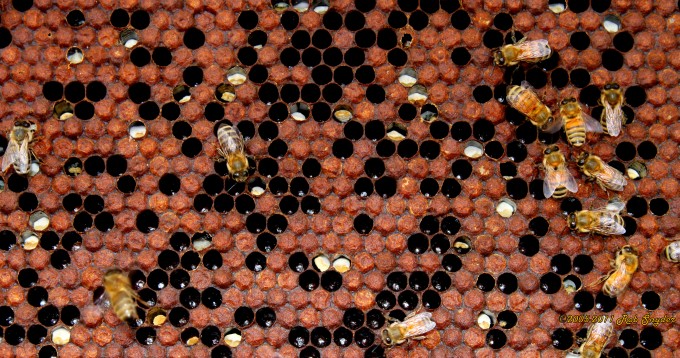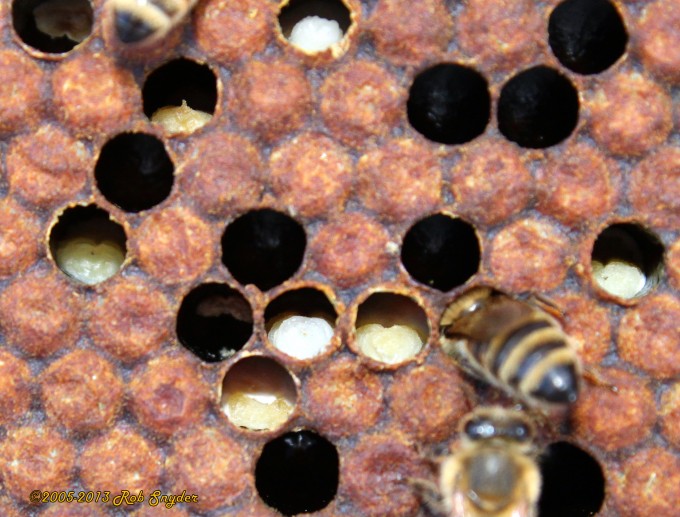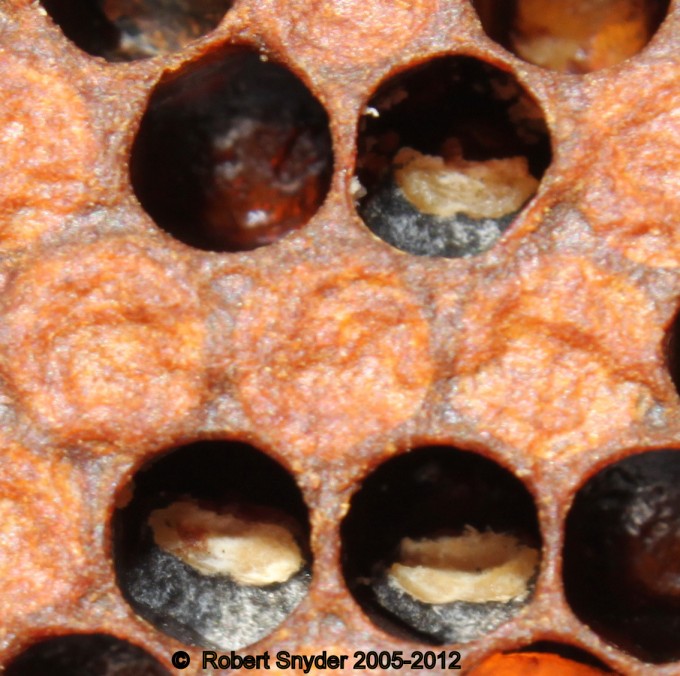
Chalkbrood (Ascosphaera apis) is typically observed during the spring but symptoms can be seen throughout the year. Chalkbrood contaminates larvae when the spores are mixed with brood food. The fungus will outcompete larvae for food and eventually turn the larvae into a “chalk-like” mummy. The color of chalkbrood ranges from white to grey then starts to turn black-this is when the fungus is producing fruiting bodies. This is the most infectious stage of chalkbrood. The black looking mummies are often what you see outside on the entrance board or in front of the hive. At this point these mummies can spread spores to other colonies in the area. Lack of population may be a contributing factor in the colonies ability to ventilate properly. Proper hive ventilation should prevent chalkbrood.

Symptoms:
• Spotty brood pattern.
• Chalk-like mummies at the colony entrance, chalk-like mummies in open brood.
• Early stages of chalkbrood look very similar to SBV but the head is less defined and more round with a sunken appearance.



Treatment:
Apiguard or a thymol based treatment is active against chalkbrood. Vitafeed Green contains thymol and also works against chalkbrood. Beevital Chalkbrood is another product available for treating chalkbrood. Increased ventilation in the hive will help prevent chalkbrood.